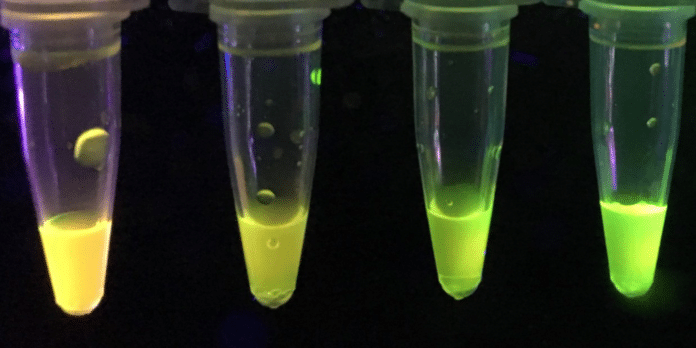Scientists at the University of Alberta have developed a paper-based sensor to detect two potent nerve toxins that have reportedly been used in chemical warfare.
Developed using silicon-based quantum dots, the sensor can be used to detect paraoxon and parathion. Once identified, the sensors turn yellow or green depending on the amount of toxin present.
User needs to install the application in their phone to know to accurately estimate the amount of the toxins in a sample, which could offer a more straightforward, faster way to detect them than current methods that require costly instruments and highly trained technicians.
U of A chemist Jonathan Veinot, who was a co-author of the study with Ph.D. student Christopher Robidillo said, “Paraoxon and parathion are nerve agents that have been used as pesticides. Accurate detection is important because these substances are potent—they can kill within minutes depending on exposure and treatment.”
Scientists combined a green fluorescent protein with silicon-based quantum dots that emit red light. When exposed to paraoxon or parathion, the mixture no longer emits red light, causing the sensor to turn various shades of yellow or green under fluorescent light.
Robidillo said, “The sensors can be used to test environmental samples and detect the presence of the nerve agents. Using a smartphone application, it is possible to estimate the amount of nerve agent present; this is more reliable than simple visual evaluation.”
The study, Ratiometric Detection of Nerve Agents by Coupling Complementary Properties of Silicon-Based Quantum Dots and Green Fluorescent Protein,” was published in ACS Applied Materials & Interfaces.
